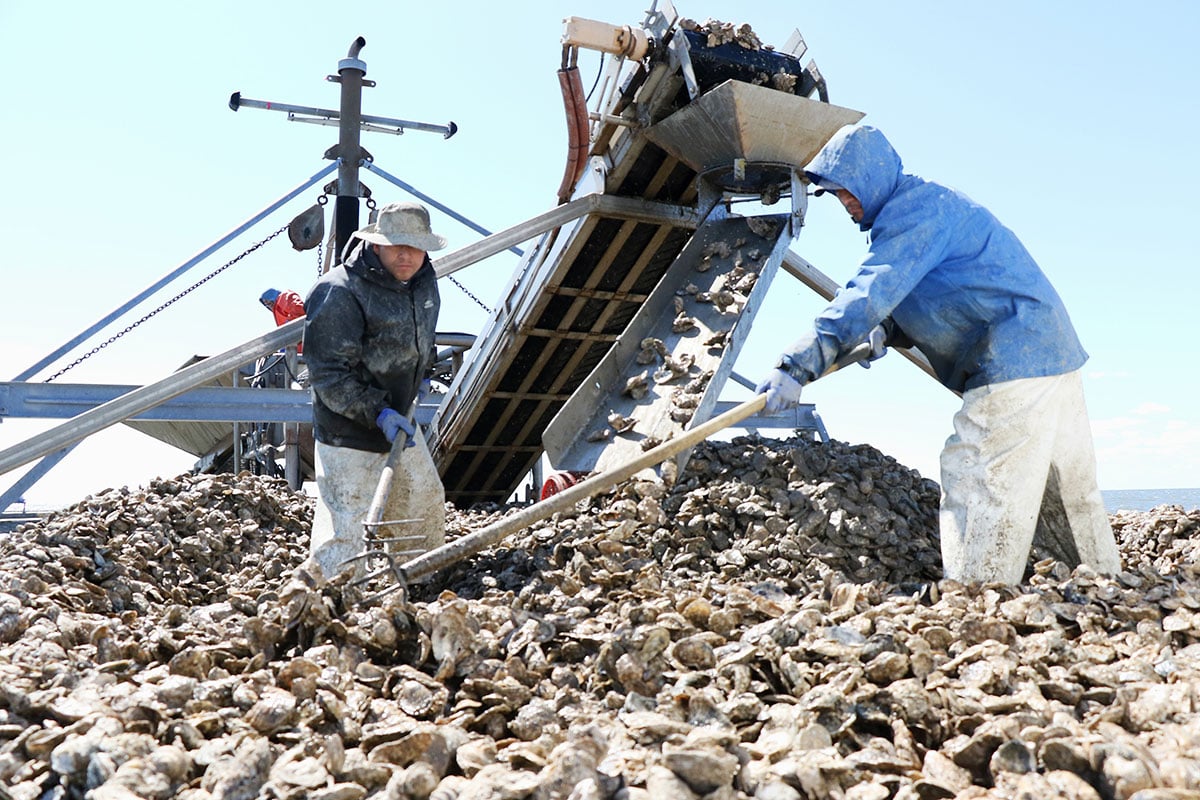
More oysters, cleaner water, and perhaps some better fishing.
Sometimes, I think I’m a glutton for punishment. Others might think I’m crazy, but I couldn’t resist the urge to embark on another adventure with Capt. Timothy Reeves on the Delaware Bay.
A couple of summers ago I spent a day photographing Capt. Reeves his crew onboard his trusted commercial crabbing vessel, the Janet R. Although the watermen worked tirelessly pulling in the daily load of 600 crab pots, I got to enjoy the brilliant sun and rather still waters of a gorgeous August day.
However, my recent trip with Capt. Reeves was dramatically different; for one, oysters were the catch of the day, and two, the weather of a mid-spring morning reared its ugly head as temperatures plummeted and strong winds gusted across the bay.
Under the cover of darkness, we departed the docks of Money Island in Cumberland County and cautiously navigated the narrow banks of Nantuxent Creek heading toward the Delaware Bay. Before the guiding light of the sun could greet us, Capt. Reeves made the final turn, steering his 65-foot wooden commercial oystering vessel, the CJ Peterson, into the open waters of the bay. Within an instant, the day had changed.
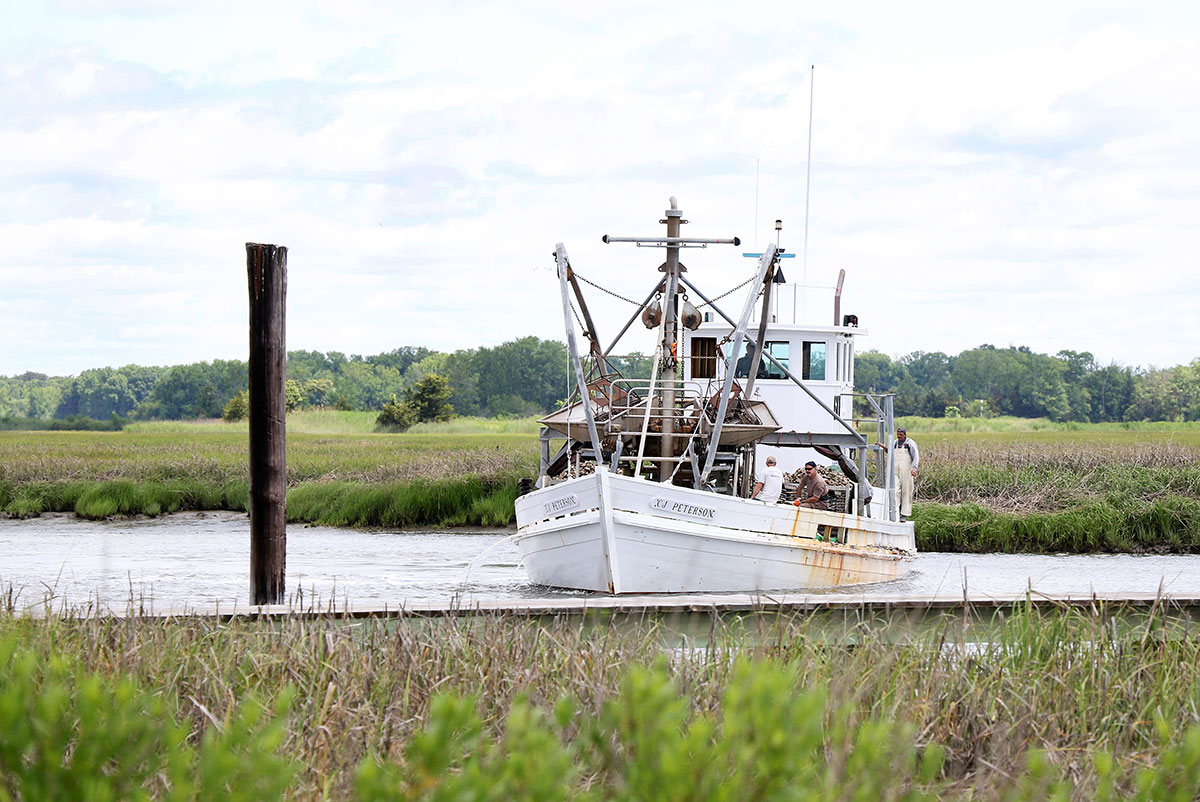
The time-tested CJ Peterson, originally built in 1908, with its distinctive schooner style, battled the wind and crashed head-on through the waters of the bay. As for me, standing in the elevated wheelhouse well above the deck, I grabbed anything I could find to maintain my balance and tried to play it cool. As for Capt. Reeves, he stood stoically behind the large steering wheel with his gaze locked on an array of navigational computer screens. But his radio transmissions with the captain of another oystering vessel directly in front of us gave me pause.
Through the crackling static and boat-captain jargon filling the air, I heard this loud and clear! “Hey, we doing this or not, it’s pretty nasty and doesn’t seem to be getting any better.”
Capt. Reeves answered, “Yeah, I hope the wind lays down after the tide changes.”
My thought was “What?!” Deep inside, I was praying for an about-face and a trip back to the dock, but it looked like that wasn’t happening! Although he wouldn’t admit it, I think Capt. Reeves was playing a cruel joke on me, making sure I didn’t think his work was all peaches and cream and hugs and teddy bears. Trust me, I didn’t. But think about it, he did pick that particular day and he told me how favorable the forecast looked. I remain suspicious!
So, we pressed on, and as we hit every approaching wave, the sparse lighting of the boat silhouetted the water spraying over the bow. At this point, Capt. Reeves instructed one of the deckhands to make sure the front hatch was closed. He looked at me calmly and said with a smile, “It’s never good to get water in the bottom of the boat.” Again, my thought was “What?!”
Within an hour, we had reached the oystering grounds and Capt. Reeves dropped the first of countless dredges for the day. At the same time, one of the daring watermen climbed the mast to a steel platform high above the deck to begin emptying the dredges as they were hauled to the surface.
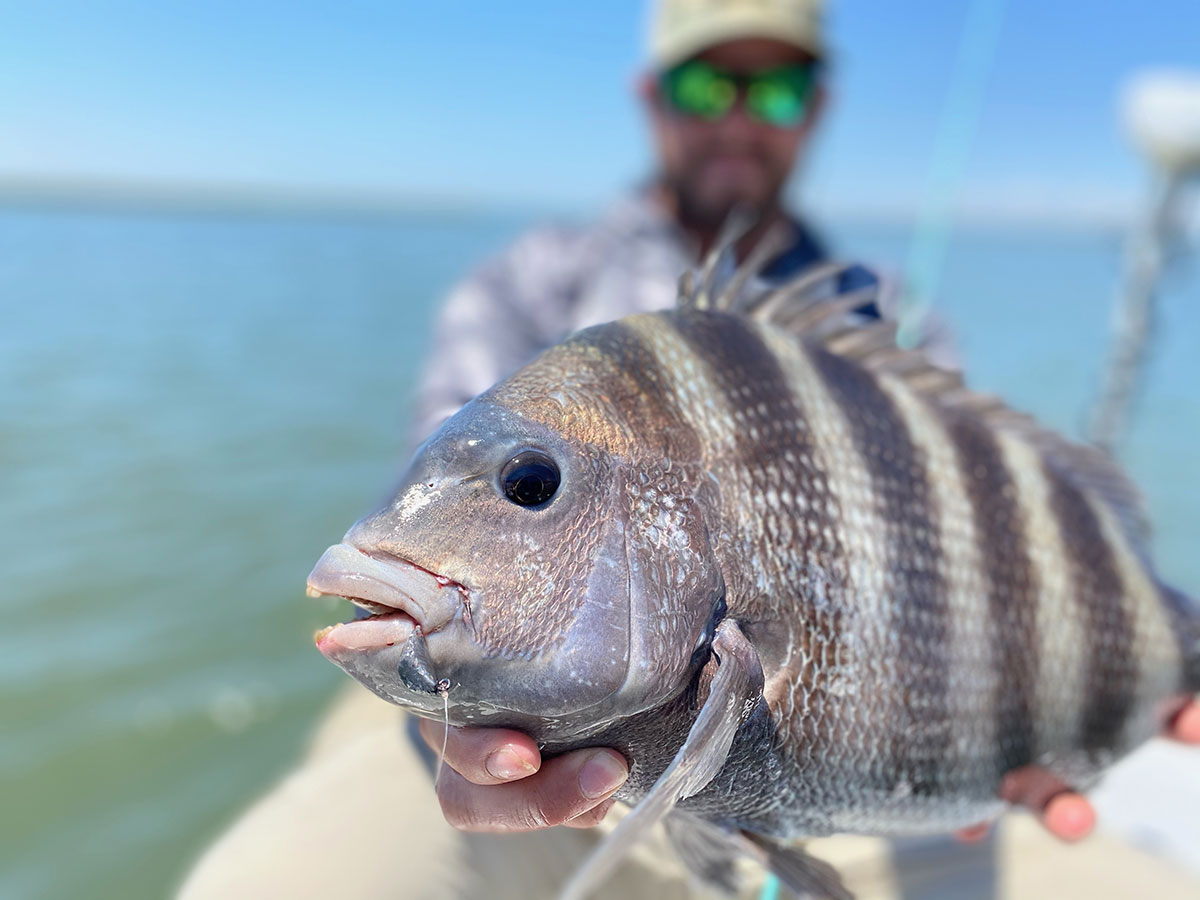
Oyster Transplanting
On this day, the catch was not for sale, and truthfully, he would make pennies on the dollar to what the commercial harvest and sale would be. Instead, he was working for the State of New Jersey, transplanting these oysters to new locations. In unrelenting weather, the crew worked hour after hour as the dredges were continually pulled from the bottom of the bay, hoisted high into the air, and emptied into large hoppers by the sole waterman perched well above the deck. Along with the loud clatter of chains, cables, and hydraulic motors, the oysters made their way through a series of chutes, conveyor belts, and rotating drums before being dumped directly onto the deck. As the towering heap of oysters grew, other crew members quickly tended to the mounting pile with rakes and baskets.
| ABOUT THE AUTHOR |
| In addition to being an accomplished wildlife photographer, John Redkoles is a United Methodist pastor, a retired New Jersey State Trooper, and a beekeeper. John’s writings, along with their accompanying photographs, have been published in Proptalk magazine, Ministry Magazine, as well as God and Nature. His photographs have also appeared in Bird and Blooms, Reservoir Road Literary Review, Haddon House Press, and used as artist references, in marketing materials, websites, and on the cover of magazines. John lives in New Jersey with his wife, who is an artist, and has two grown daughters. Visit John on Instagram @john.redkoles to see more of his unique work. |
By the end of the day, the crew had managed to wrestle roughly 1,400 bushels of oysters to the deck. With a healthy load, Capt. Reeves changed direction and steered his oystering schooner toward the new location (selected by state officials) where these oysters would be offloaded.
Once there, the watermen made short work of this task by blasting the oysters over the side of the vessel with high pressure water hoses. The massive pile vanished before my very eyes, and the deck was completely empty in no time. The oysters’ short trip out of the water was over, and they now lay at the bottom of the bay to grow and regenerate. The transplant for this day was finished, and to be honest, I was ready to get my feet onto dry and steady ground!
The transplanting and movement of oysters is critical to keeping existing oyster beds alive and thriving. In addition, transplanting aids in the regeneration of oyster beds and the establishment of new ones. The battle against disease and pollution is constant, however, healthy and strong oyster beds take part in this battle by purifying the water. That’s right, oysters filter water as they feed, and as a result, our waterways become cleaner in the process. Without question, oysters add great value to the natural environment and their importance cannot be overstated.
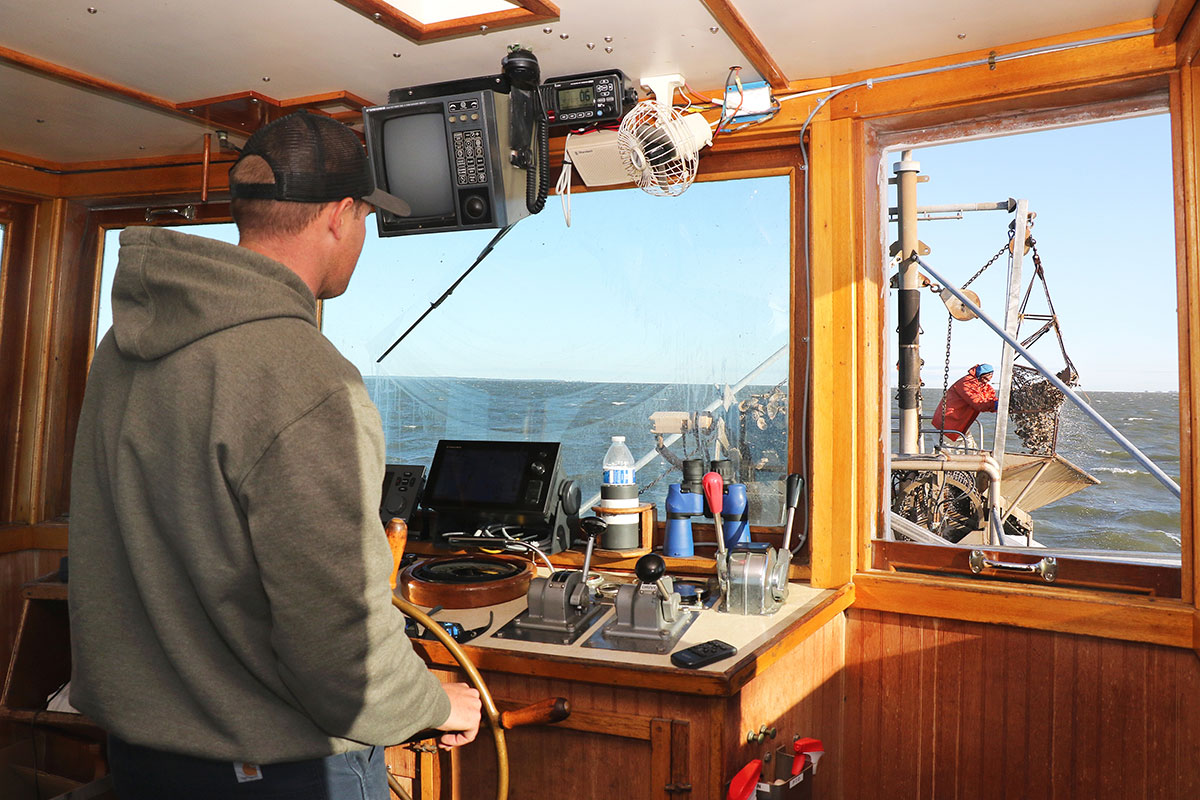
Dog Helps Dog
Without the willingness of people like Capt. Reeves to put in the hard work and give back to the environment, these efforts might not get accomplished; not everyone jumps at the opportunity to shoulder this task. For one, it pales in comparison to what can be earned in the commercial harvesting and resale of oysters. It also adds more wear and tear to your boat and equipment. And improving the health and productivity of oyster beds actually assists competitors by helping to increase their catch and harvest.
In addition, the State of New Jersey will also increase the quota and/or allowable harvest for all commercial oystering licenses. Capt. Reeves seemed unfazed by this and acknowledged that transplanting helps him as well. I get that, but it’s impossible to deny that his work in transplanting still benefits his competitors and those who only leave the dock to earn top dollar on the commercial harvesting and sale of oysters.
In the pursuit of success, the mindset of assisting your competition is often all but lost in a “dog-eat-dog” world. Truthfully, I was intrigued by all of this, and the notion that transplanting oysters actually helps the competition. So, I asked Capt. Reeves how he felt about it. Without thinking, he simply replied, “Well, I’ve always felt that it’s so much easier to work with people than against them.” And he added that “transplanting is a big help to oystering.” Once again, the wisdom of this 28-year-old captain ruled the day. With no fancy, lofty, or prideful words, Capt. Reeves captured the true meaning and essence of what I believe is the virtue of “giving back.”
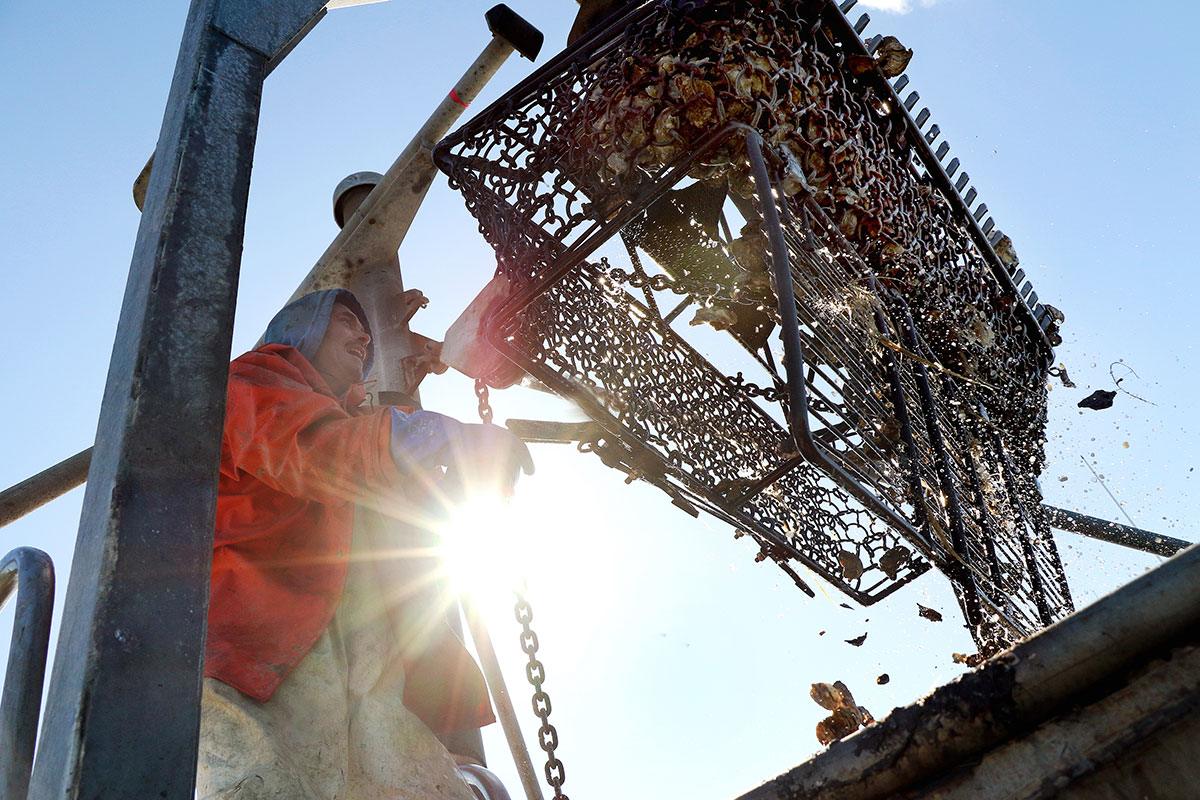
Without question, Capt. Reeves and those who join him in the work of transplanting, are giving back to the environment by helping to maintain our fragile ecosystem, and at the same time, helping to sustain the oystering industry for everyone. We often read about how our natural resources are being used up, stripped down, and decimated, all in the name of progress or profit. Therefore, it’s vital for people to step forward, to care, and to give back. Capt. Tim’s efforts will undoubtedly help the oystering industry stay alive, and his work today will have a positive impact on commercial oystering for generations to come, not to mention the numerous finfish species which thrive in oyster-rich grounds.
| EASTERN OYSTER CONSERVATION |
| According to the New Jersey Division of Fish & Wildlife, eastern oysters (Crassostrea Virginica) are a keystone species, meaning they are an integral part of a healthy marine ecosystem. Oyster reefs provide vital habitat for many of the commercial and recreational species that fishermen, boaters, and naturalists enjoy in New Jersey’s waters. Oyster reefs are home to a host of species including striped bass, blue crab, and summer flounder, among many others. Additionally, a single adult oyster can filter and clear up to 50 gallons of water each day, helping to improve water quality by cycling excess nutrients. |
After spending the day with Capt. Reeves upon the rough and rowdy waters of the bay, I came to know one thing for sure. In short, he credits his father, Todd Reeves, with making him into the person he is today. Tim described how his father introduced him to commercial fishing. He was 16 when he dropped his first oyster dredge under the watchful eye of his father. Since then, his dad Todd, has imparted his 35 plus years of experience to his son.
Capt. Reeves attributes his success to his father, and he proudly said, “My dad is not only my father, but my best friend and business partner!”




